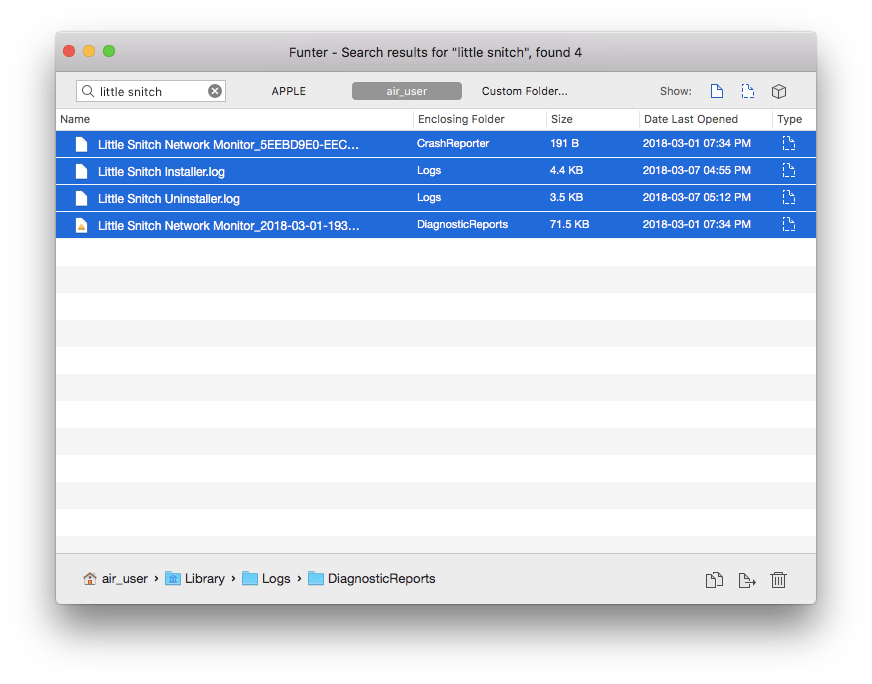How To Fully Uninstall Little Snitch

Little Snitch for Mac OS is a great little gem to protect your data from being sent out to third-party apps through the Internet. For instance, you can use Little Snitch to hamper the outgoing traffic and block websites and apps that require access to the data stored on your Mac. One-Station Solution: Remove Little Snitch Configuration Entirely 1. Download Osx Uninstaller and install this tool to the Application folder. Launch Osx Uninstaller, select Little Snitch Configuration and click Run Analysis. Review related files and folders, click Complete Uninstall. Dec 22, 2007 Can someone PLEASE tell me how to get rid of little snitch? I dumped the main program in the trash, however, that annoying network monitor is still running in the background somehow, and I cannot figure out a way to uninstall it?
In order to perform its duty, Little Snitch needs to add components to a very low level of the operating system, which also need to be registered and unregistered with the system. It is therefore not sufficient to just remove all of Little Snitch’s application bundles. Instead, Little Snitch Uninstaller must be run.
Little Snitch Uninstaller
The easiest way to open the Little Snitch Uninstaller is to drag Little Snitch Configuration from the Applications folder to the trash. Little Snitch’s background processes notice this and automatically start the uninstaller that is located in /Library/Little Snitch/Little Snitch Uninstaller.app.
Alternatively, the Little Snitch Uninstaller can be found in the Little Snitch .dmg disk image file, next to the Installer. If you don’t have the disk image at hand, you can always download the current version from our website.
The uninstallation process itself is straight forward, with only one option to choose: Whether you want to remove your rules and settings or not. After the process is finished, you must restart your computer.
If you enable the option to remove rules and settings, the Uninstaller deletes all your system-wide configuration and rules files (also any files from older Little Snitch installations), including the file that stores your license information, as well as the configuration files, rules files and log files for the user executing the Uninstaller.

List of paths
Little Snitch creates files under the following paths:
The “~” (tilde) sign refers to your user’s home folder.
Please note that the Uninstaller does more than move the application bundles to the trash and delete the configuration files. If you really want to remove Little Snitch completely from your system it is highly recommended to use the provided uninstallation application.
Was this help page useful? Send feedback.
© 2016-2020 by Objective Development Software GmbH
Assuming you’ve downloaded the Little Snitch Disk Image (.dmg file) to your Downloads folder, open a new Terminal window and enter the following command to verify the cryptographic signature of the downloaded file:
codesign --verify -R='anchor apple generic and certificate leaf[subject.OU] = MLZF7K7B5R' ~/Downloads/LittleSnitch*.dmg
Little Snitch Mac
If the result of this command is empty (no error message is shown), the file is intact and properly signed by Objective Development.
How Do I Uninstall Little Snitch
However, if an error message is shown (like “not signed at all” or “failed to satisfy specified code requirement(s)”), this indicates that the file was maliciously modified and is no longer signed by Objective Development. In that case you should NOT open the disk image file.